Walking in the woods it is all too easy to see the trees and think no further than of a collection of trees, but our woods are much, much more than this. Our woods are home to many organisms in an amazingly diverse and complex ecology, we often think it driven by trees alone, but this is far from the truth. Hidden from view for the most part are the true masters of the forest ecosystem, the Fungi. The trees are the crowning glory on our landscapes, but within this crown are the brightest and most colourful Jewels. I hope through this article to inspire you all to look a little deeper next time you’re in the woods and seek out the fruits of the forest and true masters of woodland ecology.
Fungi go unnoticed for the most part; they are micro organisms after all, their existence not obvious to the un-enquiring eye, until the main fruiting season in the autumn when their fruit-bodies (sporocarps) bejewel the woodland scene. Because of this short lived albeit bright and prolific appearance amoung the trees their role and work in the ecology of the woodland environment is rarely acknowledged or appreciated. The reality is that almost all forest life is dependent on the work done by fungi, without them the system would not have evolved to its current complexity.
Many fungi never produce the kind of fruiting bodies we call collectively mushrooms or toadstools, and their presence is only ever noticed by a few men in white coats! So this article will focus on those we may all be familiar with and see for ourselves. These are collectively known as the “macro-fungi” meaning visible with the naked eye or hand lenses.
Trees cannot relocate when they find they have used all the resources in a given location by building their immense structures which defy gravity and support their heavy sun worshipping crowns. It is down to the fungi to recycle the woody debris on the forest floor and re fertilise the soils
with essential nutrients. Some fungi have evolved complex relationships with trees to such a degree they actually generate a sheath of mycelium over roots and become an extended part of the root hair structure increasing the potential for water uptake, mineral acquisition and even defence against more harmful pathogenic fungi, collectively known as “Ectomycorrhizae”.
Some fungi have become specialists in a different way and only rot down dead or redundant tree parts, such as limbs that no longer function because of shading out like Peniophora quercina which helps Oaks and other broadleafs shed redundant branches up to about 4 inches in diameter. Others like Inonotus hispidus help ash trees shed limbs that have become too heavy and could potentially cause the tree to blow over. This relationship is complex and little researched or discussed but it has clear and obvious benefits despite seeming like a catastrophic affair!
Another specialist that does the same thing but on Oaks (mainly) is Laetiporus sulphureus or the Chicken of the woods fungus, this lives on the woody tissues known as “heartwood” and hollows old trees out helping shed overweighed limbs. These heartwood tissues are not needed by the trees and fungi can help return nutrients long since locked up back into the soil. Sometimes trees even grow new roots directly into this rotting inner core to gain new vigour. This ecology makes homes for owls, bats and other beasties of the forest too, everything is intertwined in the web of life.
A great forester once coined a phrase “the demons of D” in this he referred to the D for Disease, Decay, Dysfunction and even Death, probably never intended, but this perpetuated a rather Victorian perspective of fungi and decay which is wholly wrong. This perception of decay, this “dis-ease” still largely persists, but decay is an essential part of the ecosystem on which everything is dependant, to despise decay is to despise the life of the forest for it is the driving force in the ecology of trees and woodlands. Because of fungi the forest is more than just a collection of trees; it is a system resplendent with life of many forms. Life in the forest is about far more than trees, and I hope that this little article has inspired you all to look out for these little gems for they great fun to search for, like hidden treasures.
The brown rotter Laetiporus Sulphureus (above)sometimes causes limbs to fall, in a similar way to Inonotus hispidus, as we can see above in this oak this makes a perfect place for owls to nest!
Ganoderma applanatum (above) with “nipple galls” of the yellow flat foot fly (Agathomyia wankowiczii) a species of insect totally dependent on this one species of fungus. These complex relationships are not uncommon, there are many such relationships making ancient woodland a very fragile ecosystem.
The heart/ripe wood rotter Inonotus hispidus also causes cavities for woodpeckers and bats (below a Group of female Noctule bats making a hollow ash a maternity roost
This complex interplay between Fungi and trees is the basis of forest ecology without fungi the system would not work because trees would store up and lock in all the nutrients in the system. Forests are the lungs of the earth and the filters to our river systems which provide us with clean pure water. Fungi form huge networks within the forest soils, a single gram of soil may contain 30 metres of fungal mycelium. This massive network of roots and fungal mycelium hold on to the soils and filter toxins from pollution, both natural and industrially made. Many fungi absorb heavy metals and other toxins as do certain trees, Black walnut-Juglans nigra for example, and the reed Phragmites. This network of roots and fungi mycelium act as a giant sponge holding onto water and releasing it slowly both back into the atmosphere via trees and filtered and pure into our river systems. This service is yet to be fully appreciated! We have to learn to love all the life of the forest, we depend on them in ways we are only just beginning to comprehend. It is hard to imagine the huge task and service rendered to this planet by such a tiny organism as single cellular fungi, but life is almost if not completely dependent on them in one way or another. In the future new medicines will be born from fungi, Trametes versicolour has been found to boost the immune system to such a degree it is proving to be an effective secondary treatment in breast cancer (Paul Stamets), and Hericium erinaceus has been found to stimulate nerve and myelin regeneration.
I hope by now you’re getting the bigger picture and seeing that there is a whole lot more to the forests than the trees alone. So next time you see “a rotten old tree” spare a thought for all the bats, the owls and especially the fungi and dont be too quick to clear up those fallen dead branches, there’s life in that wood you know! Fungi are so very special and can be so very beautiful, get out in the woods and find them for yourselves.
If your VERY lucky you may find one day, high in a beech or Oak tree a fungi like this one below Hericium erinaceus. Please don’t take fungi from the wild their fruit-bodies that we see are important because they are forming the spores for new fungi to form, they sow the spores that fungi germinate from. Some fungi are also very poisonous and should be avoided. The Hericium erinaceus is one of a few fungi to be especially protected by law and it is an offence to take them from the wild or damage the habitat they live in. So please go and find them and enjoy them but leave them be for somebody else to see.
I hope you’ve enjoyed this little look into the world of the fungi in our forests and that it inspires you to learn more about them, to seek them out and enjoy them for I promise you it is a great way of enjoying and interacting with the woodland environment. Next time I will tell you about some of the more common fungi and how to find them.
Enjoy your woods!
By Hamadryad
Antony Croft, Arboroculturist and VTA (Visual Tree Assessment) practitioner






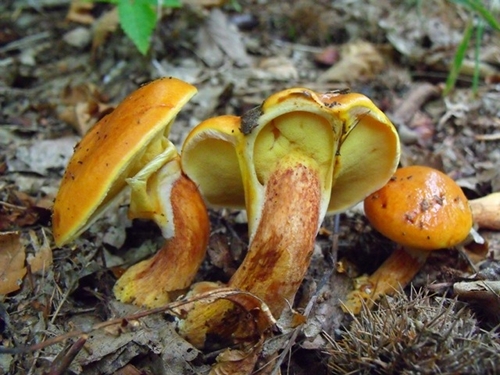
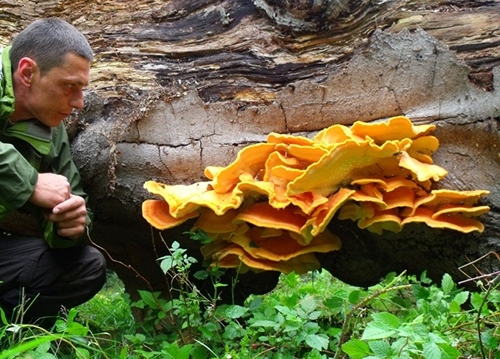
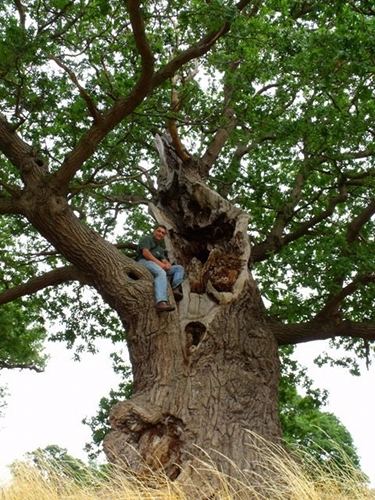
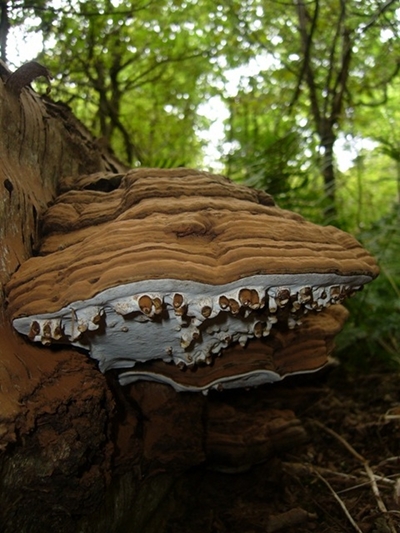
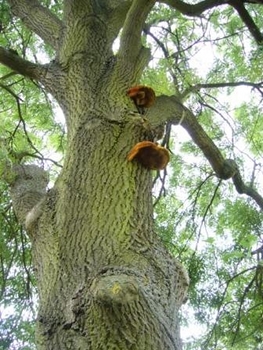
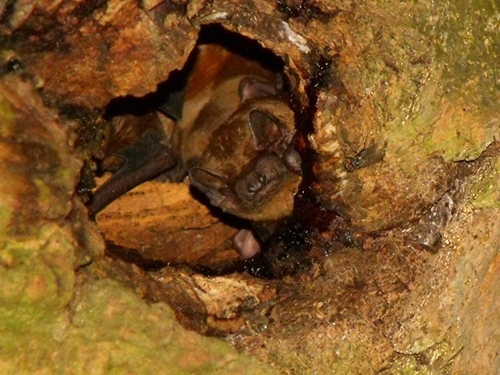
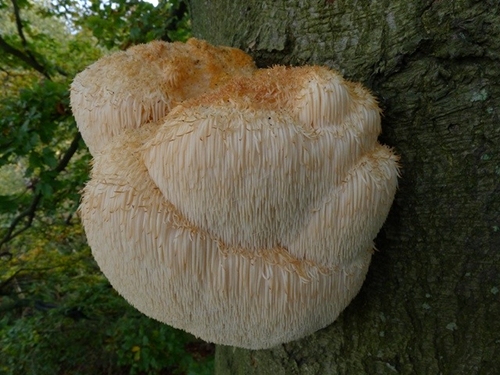























good, but please double check/correct the Latin name for larch bolete etc.
It is unfortunate that I missed the typo’s, and will try to adress the issues.
Fantastic and enthuiastic writing that had me emptying my pockets at my local bookshop for a couple of fungi guide books. The rarity of some of these fungi is extraordinary and I can’t find any conservation organisation that specifically looks out for them, but should there be?
Thank you George, you might find “the biodiversity network” page linked below has the answer to your question, but essentially no, there is no real work being done. Even if you try to get involved its like pulling hens teeth!
http://www.nbn.org.uk/The-NBN/What-is-the-NBN/NBN-Concept.aspx
A very well written piece that conveys your deep love of the woodland environment and its ecological diversity. I share you feelings entirely.
There is a conservation organisation that has been working to raise the awareness of the unique kingdom of fungi and the importance of its protection. It is international but has its origins in highly motivated individuals in Edinburgh.
The International Society for Fungal Conservation
http://www.fungal-conservation.org/
Great article Tony, and as ever some beautiful images. Inspiring reading.
You have a fantastic insight into arborecology. You are truly changing the way arborists consider fungi and the interaction between the tree, its ecosystem and the environment. Keep up the good work because your persistence and commitment to communicating your ideas is priceless. Your efforts will be crucial in driving unprecedented development in the minds of so many people – not just arborists. 😉
Hi just completed the P.T.I. Course with You in Syston. A wicked article I am eagerly awiating the follow up. Great to have met You Tony.
Hello Chris, glad you enjoyed this, and thanks for the reminder that there is another I need to write!